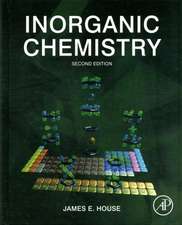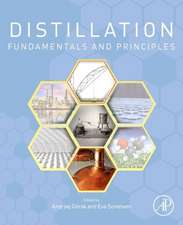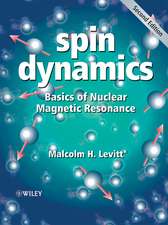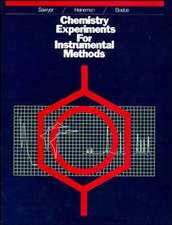Capillary Liquid Chromatography: Macromolecular Compounds
Autor B.G. Belen'kii, E.S. Gankina, V.G. Mal'tseven Limba Engleză Paperback – 17 noi 2012
Preț: 390.08 lei
Nou
Puncte Express: 585
Preț estimativ în valută:
74.64€ • 81.33$ • 62.90£
74.64€ • 81.33$ • 62.90£
Carte tipărită la comandă
Livrare economică 23 aprilie-07 mai
Preluare comenzi: 021 569.72.76
Specificații
ISBN-13: 9781468416640
ISBN-10: 1468416642
Pagini: 264
Ilustrații: 262 p.
Dimensiuni: 178 x 254 x 14 mm
Greutate: 0.46 kg
Ediția:Softcover reprint of the original 1st ed. 1987
Editura: Springer Us
Colecția Springer
Seria Macromolecular Compounds
Locul publicării:New York, NY, United States
ISBN-10: 1468416642
Pagini: 264
Ilustrații: 262 p.
Dimensiuni: 178 x 254 x 14 mm
Greutate: 0.46 kg
Ediția:Softcover reprint of the original 1st ed. 1987
Editura: Springer Us
Colecția Springer
Seria Macromolecular Compounds
Locul publicării:New York, NY, United States
Public țintă
ResearchCuprins
1. Introduction.- 2. Development and Achievements of Capillary Liquid Chromatography.- 3. Theoretical Basis of Capillary liquid Chromatography.- 3.1. Band Spreading in Packed and Open Tubular Columns.- 3.2. Optimizing Liquid Chromatography.- 3.3. Extracolumn Spreading and Optimizing the Chromatographic System.- 3.4. Optimization with Respect to Analysis Speed.- 3.5. Optimization with Respect to Sensitivity (Ultrasensitive Analysis).- 3.6. Superefficient Analysis.- 3.7. Conclusion.- 4. Equipment for Capillary Liquid Chromatography.- 4.1. Specifications.- 4.2. Microbore Liquid Chromatographs.- 4.3. Detectors for Capillary Liquid Chromatography.- 4.4. Devices for Injecting and Concentrating Samples.- 4.5. Solvent Delivery Systems.- 4.6. Temperature Gradients for Capillary Chromatography..- 5. Preparing and testing capillary columns for liquid Chromatography.- 5.1. Experimental Methods for Determining the Peak Variance Associated with Extracolumn Band Spreading.- 5.2. Packed Microbore Columns. Relationship between Performance and Packing Method.- 5.3. Preparing and Testing Microcapillary Columns.- 5.4. Possible Future Increases in the Performance of Capillary Columns.- 6. Application of Microbore Chromatography to the Analysis of Organic and Inorganic Compounds.- 6.1. Amino Acids, Their Derivatives, Peptides, and Proteins.- 6.1.A. Ultrasensitive Analyses of Amino Acids and Amines (Postcolumn Derivatization with o-Phthalic Dialdehyde).- 6.1.5. Microbore Steric-Exciusion Chromatography of Large Peptides.- 6. 1.6. Reversed-Phase Chromatography of Proteins in Short Microbore Columns.- 6.2 Steric-Exclusion Microbore Chromatography Applied to the Study of Protein Association.- 6.3. Microbore Column Chromatography of Polymers and Oligomers.- 6.4. Analyses of Antibiotics and Pharmaceuticals.- 6.5. Analyses of Nucleic Acid Components.- 6.6. Analyses of Medicines and Biologically Active Compounds.- 6.7. Microbore Liquid Chromatography in Environmental Monitoring.- 6.8. Microbore Liquid Chromatography Applied to Inorganic Compounds.- 7. Conclusion.- References.














